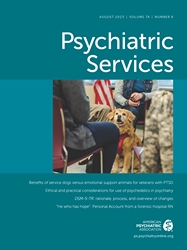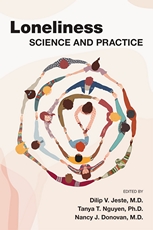Psychiatry and the Cinema, Second Edition
View Pricing
Description
Early in the history of cinema, psychiatrists studied the movies to understand their appeal and power. Meanwhile, filmmakers have long been intrigued by psychiatry and frequently portray this mysterious world in film. Both movies and psychiatry focus on human thought, emotions, behavior, and motivation—making a link between the two subjects inevitable.
Psychiatry and the Cinema explores this complementary relationship from two angles, psychiatrists who have studied the movies and movies that have depicted psychiatry. This second edition looks at:
- Over 400 theatrically-released American films that feature psychiatrists or other mental health professionals at work
- The stereotypical characters and conventions dominating the presentation of movie psychiatrists and the historical rise and fall of the psychotherapist image in the movies
- New trends in psychoanalytically oriented film theory
- State-of-the-art understanding of psychoanalytic film criticism and illustrative examples of the use of that methodology with films such as Casablanca, Alien, Three Women, Sea of Love, Working Girl, Good Will Hunting, and many more
- Clinical implications of the film representations of psychotherapy for the mental health practitioner
Both entertaining and educational, this book serves as an important aid in understanding the special hold that movies have on audiences.
Contents
- Foreword. Preface. Introduction.
Part 1. The Psychiatrist in the Movies.
Typology, mythology, ideology. The alienist, the quack, and the oracle. Golden age. The fall from grace. The female psychotherapist in the movies. Clinical implications.Part 2. The Psychiatrist at the Movies.
Methodology and psychoanalytic film criticism. Play it again, Sigmund: psychoanalytic approaches to the classic hollywood text. 3 Women: Robert Altman's dream world. Narcissism in the cinema I: the cinematic autobiography. Narcissism in the cinema II: the celebrity. Alien and Melanie Klein's night music. Phallic women in the contemporary cinema. Epilogue. Filmography. References. Index.
About the Authors
Glen O. Gabbard, M.D., is Professor and Director of the Baylor Psychiatry Clinic at the Baylor College of Medicine and Training and Supervising Analyst at the Houston-Galveston Psychoanalytic Institute in Houston, Texas. He was previously Director of the Menninger Hospital in Topeka, Kansas. Dr. Gabbard is the author or editor of sixteen books and currently is joint Editor-in-Chief and Editor for North America of the International Journal of Psychoanalysis. His numerous awards include the 2000 Mary Sigourney Award for outstanding contributions to psychoanalysis.
Krin Gabbard, Ph.D., teaches film, literature, and cultural studies at the State University of New York at Stony Brook. He is author of Jammin' at the Margins: Jazz and the American Cinema (1996) and editor of Jazz Among the Discourses (1995) and Representing Jazz (1995). He is currently working on a book about movies, masculinity, and music.
Related Products
Carousel Control - items will scroll by tabbing through them, otherwise arrows can be used to scroll one item at a time








